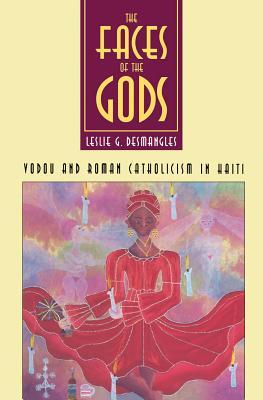
Desmangles sees Vodou not simply as a grafting of European religious traditions onto African stock, but as a true creole phenomenon, born out of the oppressive conditions of slavery and the necessary adaptation of slaves to a New World environment.
Desmangles uses Haitian history to explain this phenomenon, paying particular attention to the role of the seventeenth- and eighteenth-century maroon communities in preserving African traditions and the attempts by the Catholic, educated elite to suppress African-based "superstitions." The result is a society in which one religion, Catholicism, is visible and official; the other, Vodou, is unofficial and largely secretive.
Desmangles sees Vodou not simply as a grafting of European religious traditions onto African stock, but as a true creole phenomenon, born out of the oppressive conditions of slavery and the necessary adaptation of slaves to a New World environment.
Desmangles uses Haitian history to explain this phenomenon, paying particular attention to the role of the seventeenth- and eighteenth-century maroon communities in preserving African traditions and the attempts by the Catholic, educated elite to suppress African-based "superstitions." The result is a society in which one religion, Catholicism, is visible and official; the other, Vodou, is unofficial and largely secretive.
Paperback
$47.50